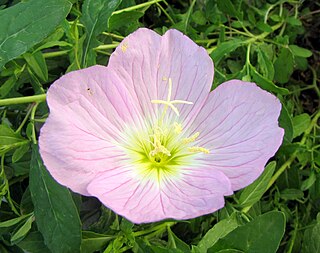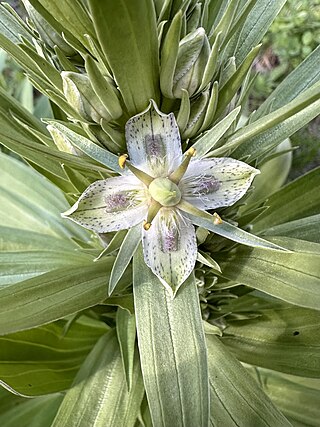
Ceiba is a genus of trees in the family Malvaceae, native to tropical and subtropical areas of the Americas and tropical West Africa. Some species can grow to 70 m (230 ft) tall or more, with a straight, largely branchless trunk that culminates in a huge, spreading canopy, and buttress roots that can be taller than a grown person. The best-known, and most widely cultivated, species is Kapok, Ceiba pentandra, one of several trees known as kapok. Ceiba is a word from the Taíno language meaning "boat" because Taínos use the wood to build their dugout canoes.

Catalpa, commonly also called catawba, is a genus of flowering plants in the family Bignoniaceae, native to warm temperate and subtropical regions of North America, the Caribbean, and East Asia.

Chaenomeles is a genus of four species of deciduous spiny shrubs, usually 1–3 m tall, in the family Rosaceae. They are native to Southeast Asia. These plants are related to the quince and the Chinese quince, differing in the serrated leaves that lack fuzz, and in the flowers, borne in clusters, having deciduous sepals and styles that are connate at the base.

Oenothera speciosa is a species in the evening primrose family known by several common names, including pinkladies, pink evening primrose, showy evening primrose, Mexican primrose, and buttercups.

Clarkia is a genus within the flowering plant family Onagraceae. Over 40 species are currently classified in Clarkia; almost all are native to western North America, though one species is native to South America.

Psychotria is a genus of flowering plants in the family Rubiaceae. It contains 1,645 species and is therefore one of the largest genera of flowering plants. The genus has a pantropical distribution and members of the genus are small understorey trees in tropical forests. Some species are endangered or facing extinction due to deforestation, especially species of central Africa and the Pacific.

Chaenomeles speciosa, the flowering quince, Chinese quince or Japanese quince, is a thorny deciduous or semi-evergreen shrub native to eastern Asia. It is taller than another commonly cultivated species, C. japonica, usually growing to about 2 m. The flowers are usually red, but may be pink, white or green. The fruit is a fragrant, hard pome that resembles a quince.

Cheilocostus speciosus, or crêpe ginger, is a species of flowering plant in the family Costaceae. Some botanists have now revived the synonym Hellenia speciosa for this species.

Gambelia speciosa, previously classified as Galvezia speciosa, is commonly known as showy island snapdragon or showy greenbright.

Streblorrhiza was a monotypic genus of legumes in the family Fabaceae. Its only species was Streblorrhiza speciosa, a perennial shrub endemic to Phillip Island. It is now presumed extinct.

Prunus speciosa, the Oshima cherry, is native to Izu Ōshima island and the Izu Peninsula on Honshū near Tokyo, Japan.

Galeopsis speciosa, the large-flowered hemp-nettle or Edmonton hempnettle, is a species of annual herbaceous plants in the family Lamiaceae. It is native to northern and central Europe and Siberia. It has become a widespread introduced weed in Canada. The plant is poisonous and causes paralysis.

Frasera speciosa is a species of flowering plant in the gentian family (Gentianaceae) known by the common names elkweed, monument plant, and green gentian. When blooming it grows a tall stalk with numerous flowers that have purple dotted green petals. Each plant can flower just once before it dies.

Luehea is a genus of trees in the family Malvaceae.

Livistona speciosa is a species of fan palm in the family Arecaceae.

Aloe speciosa is a species of flowering plant in the Asphodelaceae family. It is commonly called tilt-head aloe and is an arborescent aloe indigenous to the thicket vegetation of the southern Cape Provinces of South Africa.
Rhizanthella speciosa is a species of flowering plant in the orchid family and is endemic to Barrington Tops in New South Wales. It is a mycoheterotrophic herb that spends its entire life cycle, including flowering, at or below the soil surface.
Hoverdenia is a monotypic genus of flowering plants belonging to the family Acanthaceae. It only contains one species, Hoverdenia speciosa.
Poortmannia is a genus of flowering plants belonging to the family Solanaceae. It is also in Solanoideae subfamily, tribe Solandreae Miers and also subtribe Juanulloinae. The genus has only one known species, Poortmannia speciosaDrake.

Cheiridopsis speciosa is a species of plant from South Africa.

















